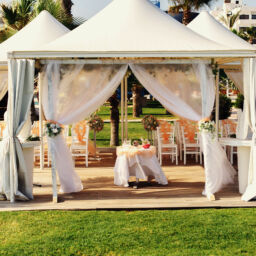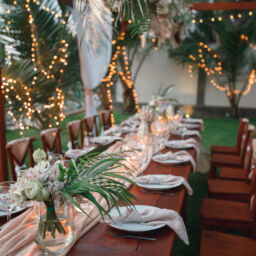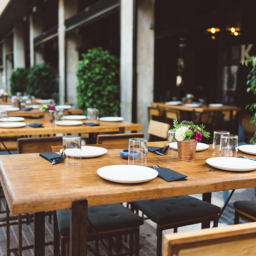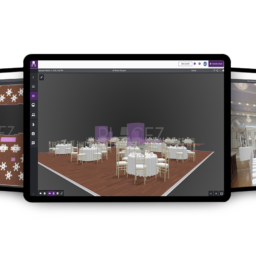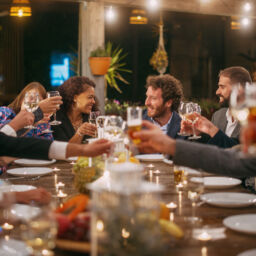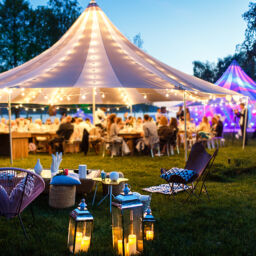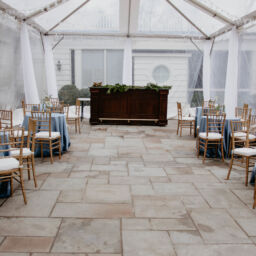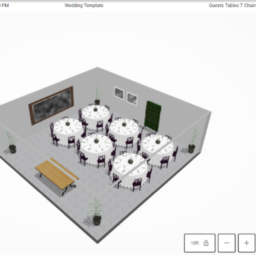Planning a Fourth of July event can be daunting, especially when you want to ensure everything goes off without a hitch. But with the right strategies and tools, you can create a seamless and unforgettable experience for your guests. Whether you’re an experienced event planner or a venue owner looking to host a memorable celebration, we’ve got you covered.
In this post, we’ll walk you through the essentials of Fourth of July event planning, focusing on room diagramming—a crucial aspect that can make all the difference. You’ll learn how to optimize your space, enhance guest experience, and ensure safety, all while maintaining the festive spirit of Independence Day. Let’s get started!
Understanding the Importance of Room Diagramming
Room diagramming is more than just arranging tables and chairs. It’s about creating a functional and aesthetically pleasing layout that enhances the flow of your event. Proper room diagramming ensures that all elements, from seating to decorations, work harmoniously together.
Room diagramming helps visualize the setup before the actual event. This allows you to make adjustments and anticipate any potential issues. It also ensures efficient use of space so you can accommodate all guests comfortably without overcrowding. Finally, a well-thought-out diagram can improve the overall guest experience by making the event more organized and enjoyable.
Choosing the Right Venue
Selecting the perfect venue is the first step in your Fourth of July event planning. Consider the size, location, and amenities of potential venues. Make sure the venue aligns with the theme and scale of your event.
Start by assessing the number of guests. A venue that’s too small can feel cramped, while one that’s too large may seem impersonal. Next, think about the location. Choose a venue that’s easily accessible to your guests. Lastly, consider the amenities. Does the venue offer sufficient parking? Are there restrooms and catering facilities?
Carefully selecting your venue sets the stage for a successful event.
Crafting the Perfect Layout
Creating a detailed room diagram is essential for any event. Start by sketching a basic layout of the venue. Include key areas like entry points, stage, dance floor, and dining areas.
Once you have the basics, add specific details. Where will the buffet be set? Will there be a bar area? How many tables and chairs will you need, and where will they go? Use symbols and labels to indicate each element.
A well-crafted layout ensures that every aspect of your event is well-planned and executed. It also helps communicate your vision to vendors and staff, ensuring everyone is on the same page.
Incorporating Safety Measures
Safety should always be a priority in event planning. Ensure your layout includes clear pathways for easy movement and accessible emergency exits.
Consider the placement of fire extinguishers and first aid kits. Ensure there are no tripping hazards and all electrical equipment is safely positioned.
Incorporating safety measures into your room diagram creates a secure environment for your guests, allowing them to enjoy the festivities without worry.
Enhancing Guest Comfort
Guest comfort is crucial for a successful event. Ensure there is ample seating and that tables are not too close together. Consider the placement of restrooms and ensure they are easily accessible.
Think about temperature control. If your event is outdoors, provide shaded areas or fans. Ensure the venue’s heating and cooling systems function correctly for indoor events.
Remember, a comfortable guest is a happy guest. Prioritize their comfort in your planning and layout.
Creating a Festive Atmosphere
Your Fourth of July event should be a celebration of freedom and joy. Incorporate patriotic colors and decorations into your layout. Consider flags, banners, and table centerpieces that reflect the holiday spirit.
Think about lighting. String lights and lanterns can create a warm and inviting atmosphere. Fireworks are a classic Fourth of July feature—ensure you have a safe, designated area for them.
By creating a festive atmosphere, you enhance the overall experience for your guests, making your event memorable.
Coordinating with Vendors
Successful event planning requires effective coordination with vendors. Share your room diagram with caterers, decorators, and other service providers to ensure everyone understands the layout and their specific roles.
Schedule setup times and walkthroughs. This allows vendors to familiarize themselves with the space and address any concerns. Clear communication is key to ensuring everything runs smoothly on the event day.
By coordinating effectively with vendors, you ensure a seamless setup and execution of your event.
Managing Event Flow
A well-organized event flow keeps guests engaged and entertained. Plan the sequence of activities and ensure a good mix of entertainment, dining, and socializing opportunities.
Consider creating a timeline. Include key events like speeches, performances, and meal times. Share this timeline with your team and vendors to ensure everyone is on the same page.
Managing event flow ensures your guests have a dynamic and enjoyable experience.
Utilizing Technology
Modern technology can significantly enhance your event planning process. Use room diagramming software to create precise layouts and quickly make adjustments.
Use event management apps to track RSVPs, send reminders, and communicate with guests. Social media can also be a powerful tool for promoting your event and engaging with attendees.
Utilizing technology will streamline your planning process and enhance the overall event experience.
Encouraging Guest Participation
Engage your guests by incorporating interactive elements into your event. Consider games, photo booths, and live entertainment. Encourage guests to share their experiences on social media using a unique event hashtag.
Provide opportunities for guests to participate in the festivities. This could include a fireworks display, a pie-eating contest, or a dance-off.
By encouraging guest participation, you create a lively and engaging atmosphere.
Reflecting on the Event
After the event, reflect on what worked well and what could be improved. Gather feedback from guests and vendors. Review your room diagram and layout to identify any areas for improvement.
Use this information to refine your planning process for future events. Continuous improvement ensures each event you plan is better than the last.
Building a Community
Creating a sense of community is a powerful way to enhance your event. Encourage guests to connect and network. Consider making a social media post-event group where attendees can share photos and memories.
Foster a welcoming and inclusive atmosphere. Recognize and celebrate the contributions of your team and vendors.
Building a community around your events creates lasting connections and enhances the overall experience for everyone involved.
Conclusion
Planning a Fourth of July event is rewarding and brings people together to celebrate freedom and joy. By focusing on effective room diagramming and incorporating the tips and strategies outlined in this guide, you can create a seamless and unforgettable experience for your guests. Remember, successful event planning is all about attention to detail, effective communication, and creating a welcoming atmosphere. Whether you’re an experienced event planner or a venue owner, these insights will help elevate your event planning game.


